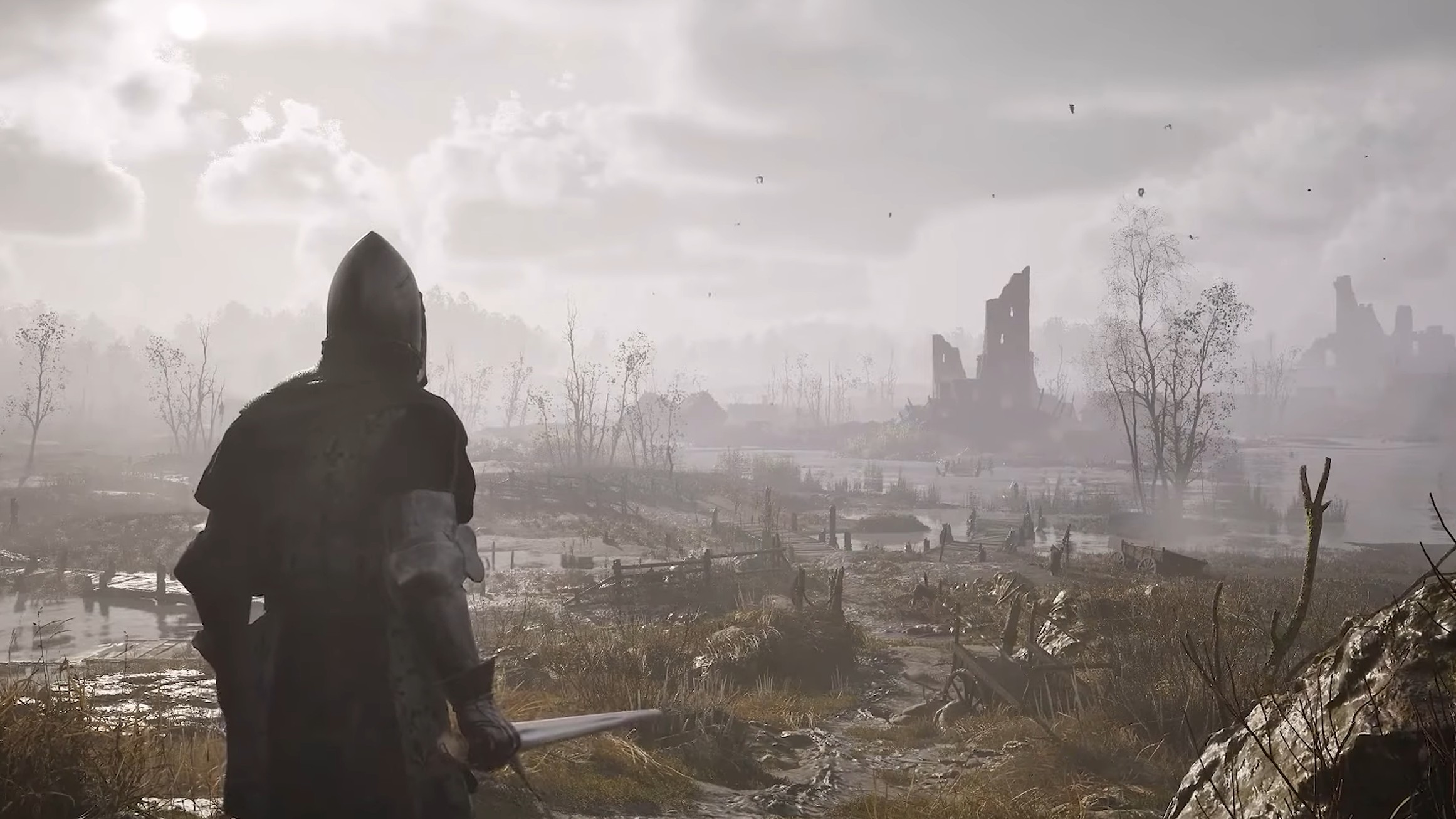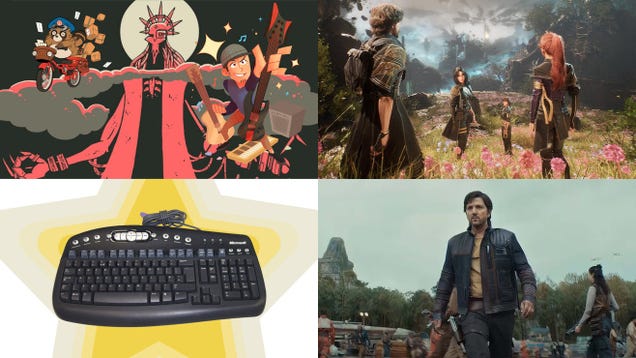
The Wild Robot Review
To put it succinctly, The Wild Robot follows a lost automaton, ROZZUM 7134 (Lupita Nyong’o), as she wakes up on an unpopulated island, adopts an orphaned gosling runt, and befriends a wily fox. It’s a pretty standard premise for an all-ages animated feature from the co-director of Lilo & Stitch and How to Train Your Dragon. However, the story (an adaption of the young reader’s series by Peter Brown) is loaded with meaning at every turn, right from the moment ROZZUM 7134 (or “Roz” for short) opens her eyes in the unfamiliar wilderness, unsure of how she got there, but eager to fulfill her programming: finding and satisfying potential customers. While it often squeezes too much plot into a runtime that’s practically bursting at the seams, The Wild Robot approaches each and every moment with thoughtful panache. Whether they’re quiet or explosive, the results add up to a revelatory tearjerker.
Chris Sanders’ first animated effort as a solo director wears its influences on its sleeve without aping their style. Exactly when and where The Wild Robot is set is left intentionally vague – it takes place, after all, in nature. But its WALL-E-esque world – embodied by other recent films like the A.I. romance Love Me – speaks to the bits and pieces of humanity that cybernetic beings have picked up from their creators, and thus, the imprints humankind has left behind. The answer is disconcerting: Roz is essentially a worker drone, whose sense of self is derived from completing utilitarian “tasks.” However, this is challenged when she comes across and learns to communicate with the baby Brightbill (Kit Connor), and begins rewiring her M.O. on the fly. She all but becomes Brightbill’s mother, while living on the outskirts of a community of wild animals.
Roz’s expressive, camera lens eyes – and the colored mood lighting that accents her chassis – go a long way toward imbuing this mechanical protagonist with a sense of curiosity. It’s amusing to watch, but The Wild Robot has a surprisingly macabre sense of humor too. The food chain is a natural part of these animal’s lives, and they live in constant proximity to death, giving way to some shockingly funny cartoon violence. And yet, the movie finds its heart within this wry tone. For instance, the Catherine O’Hara-voiced mother opossum Pinktail raises her babies with the knowledge that they could be eaten at any second, while still harboring a sense of warmth. Things become all the more sentimental when the film’s central plot fades into view. As winter approaches, the only way Brightbill will survive is if Roz and Finn (the aforementioned fox, voiced by Pedro Pascal) teach him to fly.. Essentially, the next step in Roz’s “task” of motherhood is to let Brightbill go so he can migrate alongside his fellow geese – a tale of sacrifice that pulls hard at the heartstrings.
There are surprisingly complex layers to this seemingly simple plot, which concern what Roz was built for, and how she slowly transcends it in distinctly human ways that terrify her. The apparent simplicity gives way to numerous fun swerves that shift The Wild Robot’s tone, and even its genre. In the process, it rushes through its densely packed story and past some potentially meaningful moments for reflection. But as it takes on the thrills and epic sweep of an action movie, The Wild Robot always finds expressive and exciting ways to bring its roiling emotions to the surface.
It’s visually gorgeous too, foregoing sheen and photorealism in favor of stylized textures that feel pulled from the illustrations in children’s books – or, at times, crayon scribblings in their margins. It’s wonderfully imaginative, and its “camera” feels constantly in motion, especially when The Wild Robot becomes not just about found family, but about the bonds of community.
Although it features designs and story elements reminiscent of The Iron Giant, James Cameron’s Avatar, and the works of Hayao Miyazaki, the overarching result of Sanders’ work is stunningly original, and deeply moving. More than anything, its parenthood metaphors – the adoption-adjacent story of different species trying to find belonging, the moving moments of motherhood placed under a microscope – soar. Roz’s personal journey is equally stirring, as she tries to understand her own evolving instincts and reaches beyond them – intended to be a cog in a commercial machine, she winds up helping to weave an entire social fabric.
The Wild Robot approaches each and every moment with thoughtful panache.
This rounds out the movie’s other subtext: A focused analogy for Hollywood filmmaking, and creating art within a studio system. It’s not a particularly difficult line to draw – Roz’s mandates come courtesy of a company called Universal Dynamics; The Wild Robot was produced by Dreamworks, owned by Universal Pictures – but it proves immensely rewarding. Like Sanders and his team of animators. Roz must bond with fellow misfits, while using the tools of this industrial framework, in order to create something unexpected, and something that lasts. By my account, they’ve accomplished that task.








